Table of Contents
What is the Hint in Photography
Hint is a commonly used method in photography, it inspires people to explore deeper connotations. The sense of form of the picture and the elements that make up the form of the picture, the persistence of aesthetic vision in the picture, the overall feeling of the background and the strengthening hints of certain characteristic visual language can all play a role in aesthetic appreciation. The guidance of meaning and the limitation of the scope of meaning make the picture expression more concentrated and clearer.
Various constituent factors in the picture, such as tone, color, line, shape, rhythm, texture, texture, subject position, etc., have a certain degree and scope of suggestive effect on the accurate expression of the emotion and meaning of the picture.
Hints of Color
The suggestive effect of color on emotions is the most obvious. The color phenomenon itself is a psychological reflection. In the graphic art of visual modeling, the modeling role of color is extremely important.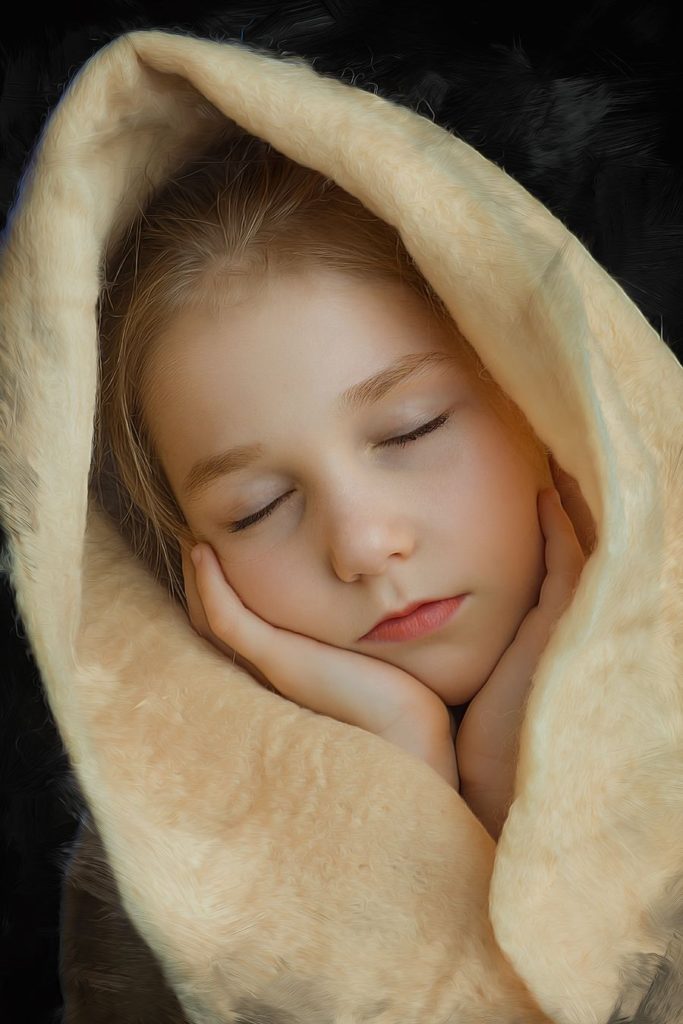
Aperture: F/13, shutter speed: 1/125s, focal length: 85mm, ISO: 50
Cool colors and warm colors, light colors and heavy colors, have their own emphasis on emotional meaning. Cool colors are quiet, warm colors are warm, light colors are elegant, and heavy colors are solemn. The color scheme of the picture can be selected according to the emotional characteristics of the picture. The color relationship in the picture is actually a certain emotional relationship. In order to ensure the quality of emotional expression in the photographic images, the color configuration must be both varied and harmonious.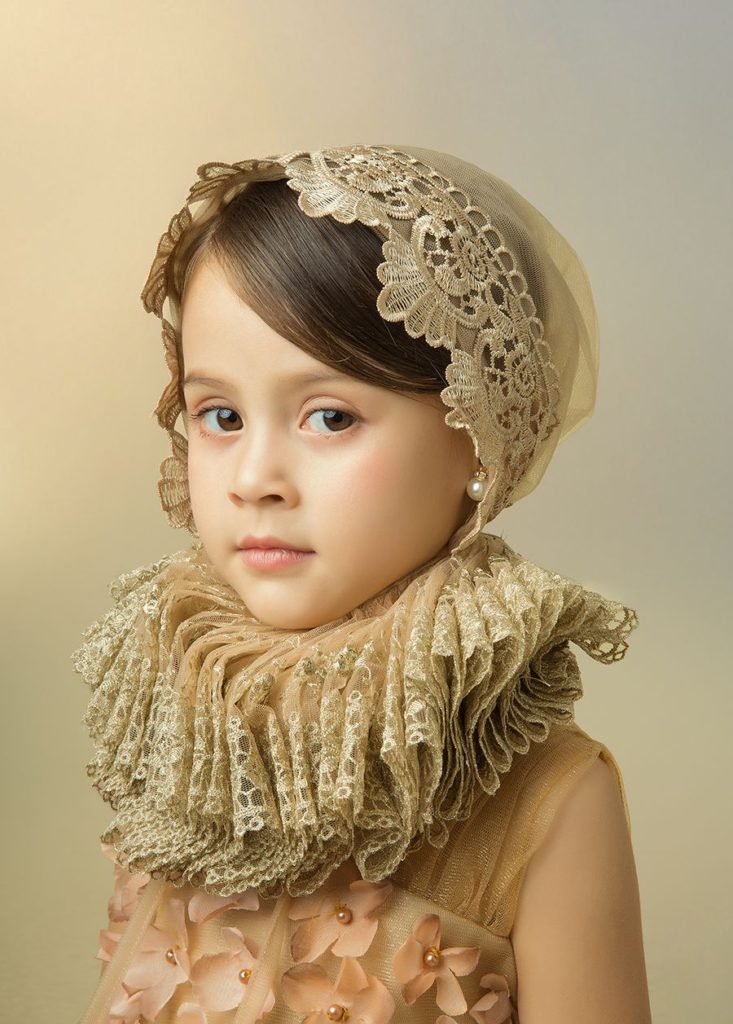
Aperture: F/16, Shutter Speed: 1/160s, Focal Length: 70mm, ISO: 50
Light orange and light brown make up the warm atmosphere of the picture, setting off the characters’ rosy skin.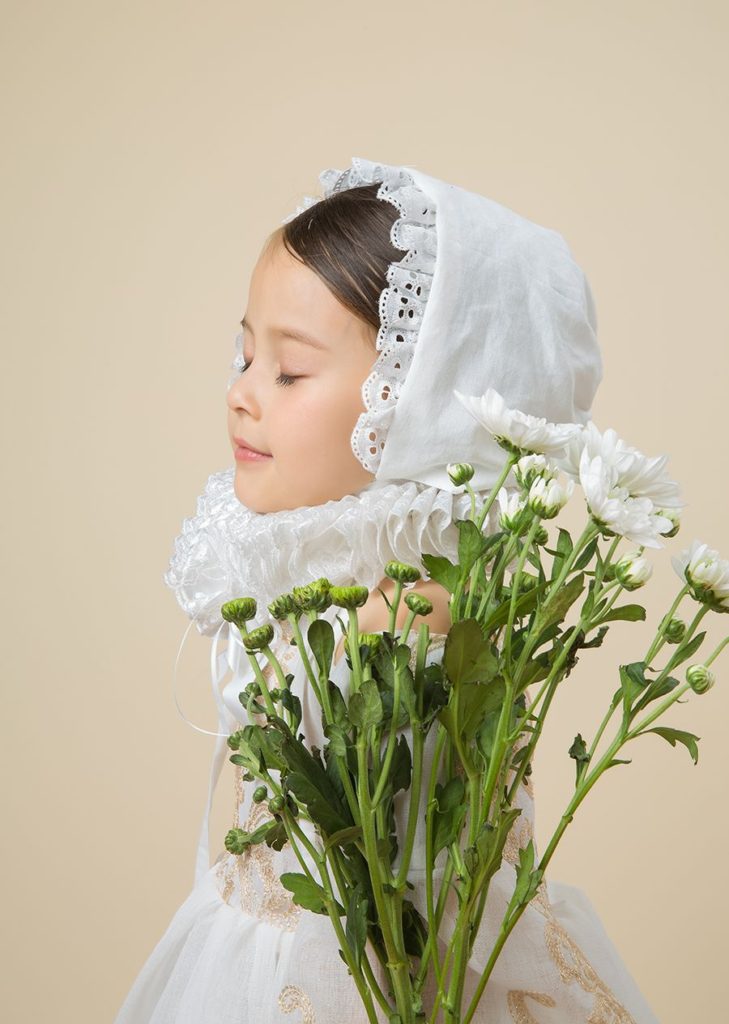
Aperture: F/16, Shutter Speed: 1/125s, Focal Length: 63mm, ISO: 50
The white clothing and white flowers match the light background to form a unified color tone.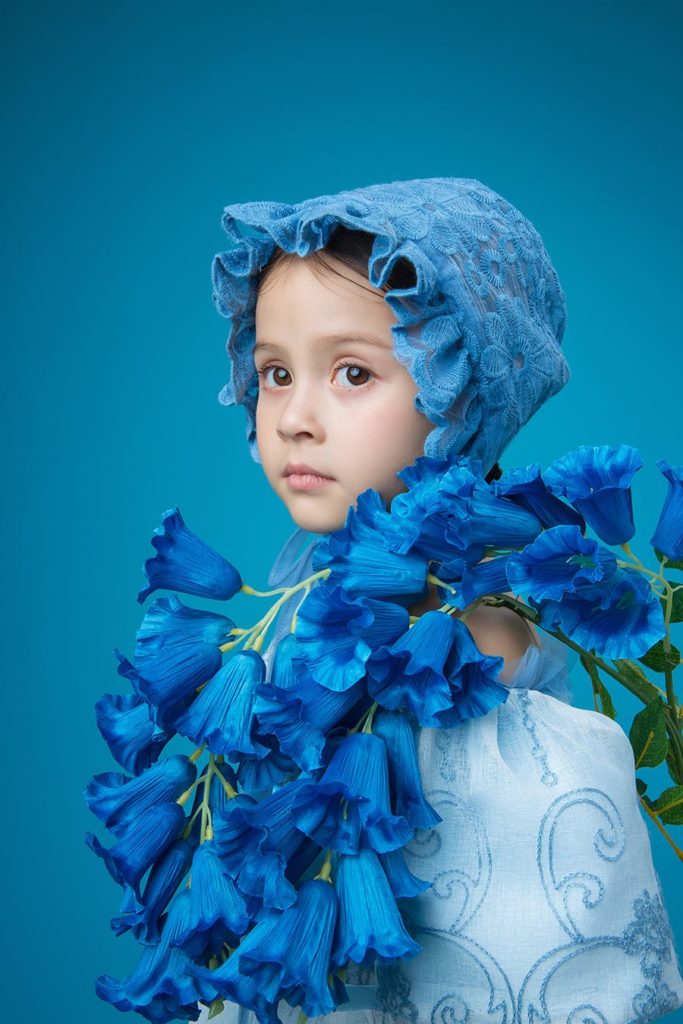
Aperture: F/18, shutter speed: 1/125s, focal length: 38mm, ISO: 50
As the main color of the picture, blue conveys a calm sense of distance.
Hint of Texture
Controlling texture mainly refers to how to emphasize texture, how to restore texture, and how to weaken texture in photographic images. Of course, there are also texture replacement and texture superposition. The emphasis or weakening of texture is consistent with the photographer’s creative intentions. Taking this group of works as an example, the photographer wants to show nostalgic and retro image quality. Therefore, from the early lighting and character modeling to the later adjustments, all follow the same rules.
The more three-dimensional lighting is the first step to reflect the texture of the picture. The small aperture plays a key role in restoring details in the picture. In the latter part of the process, by adding material layers to add grain and scratches to the picture, making the picture more retro and aging.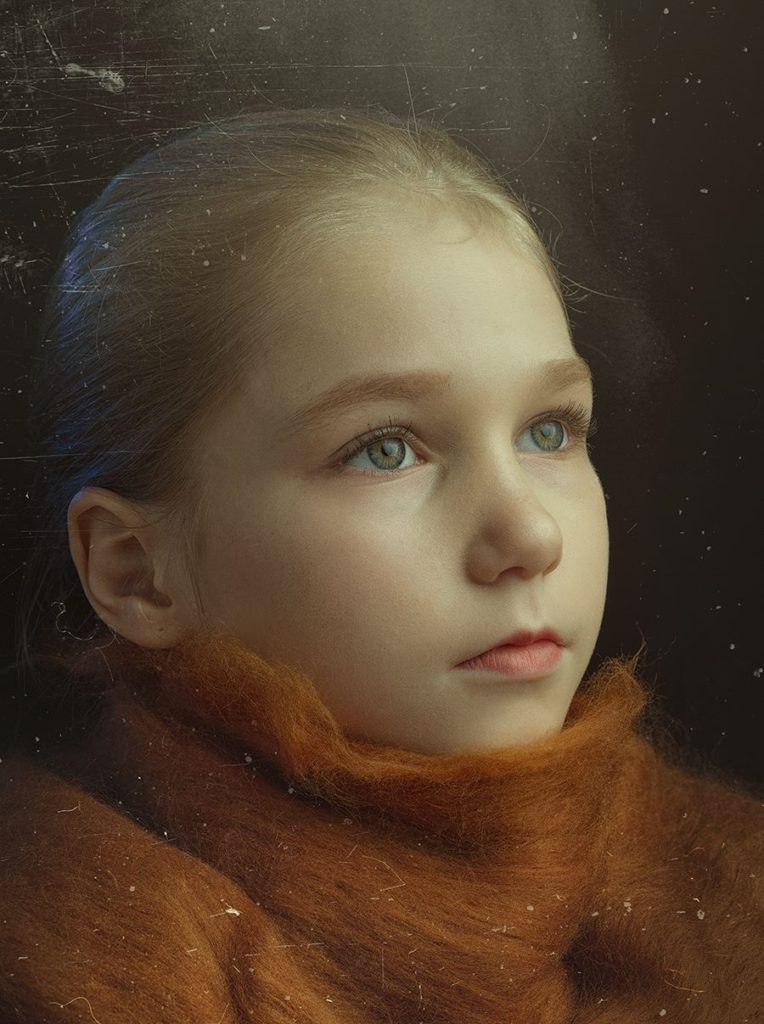
Aperture: F/13, Shutter Speed: 1/125s, Focal Length: 85mm, ISO: 50
Warm-tone Color
The main light is a soft box, arranged at about 45° to the left of the character. The auxiliary light is a blue color chip light, arranged on the right back side of the character. The blue contour light contrasts with the overall warm tone of the picture, adding a sense of calm and tranquility to the warm-toned picture.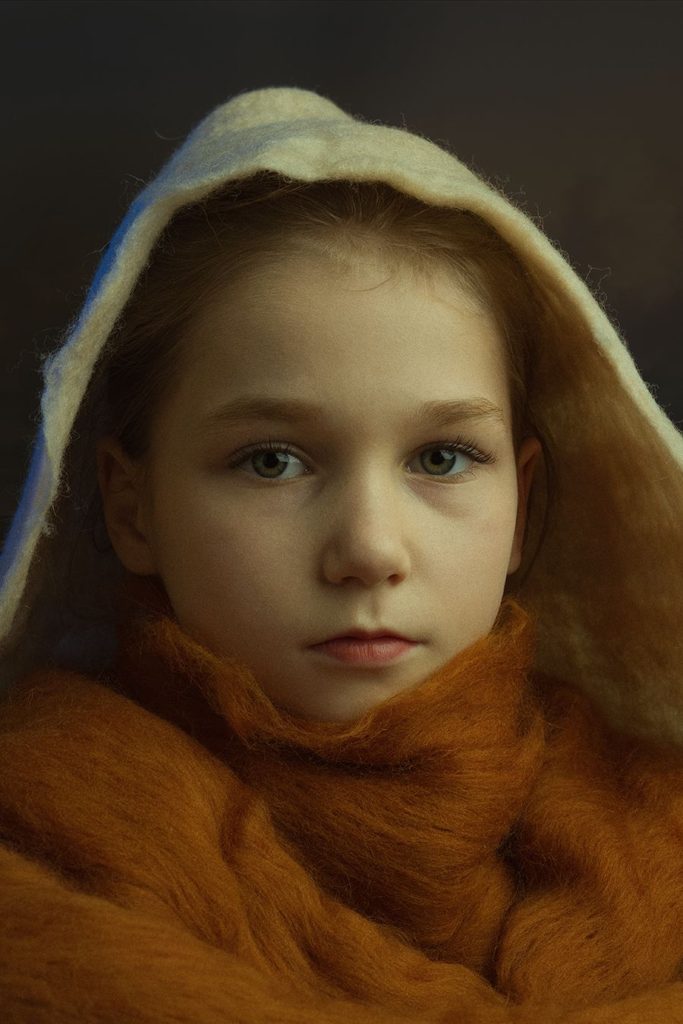
Aperture: F/13 Shutter speed: 1/125s Focal length: 85mm ISO: 50
Wrapped cloth made of wool felt is soft in texture and vintage in color. The smooth line texture reflects the brush touch of Van Gogh’s paintings.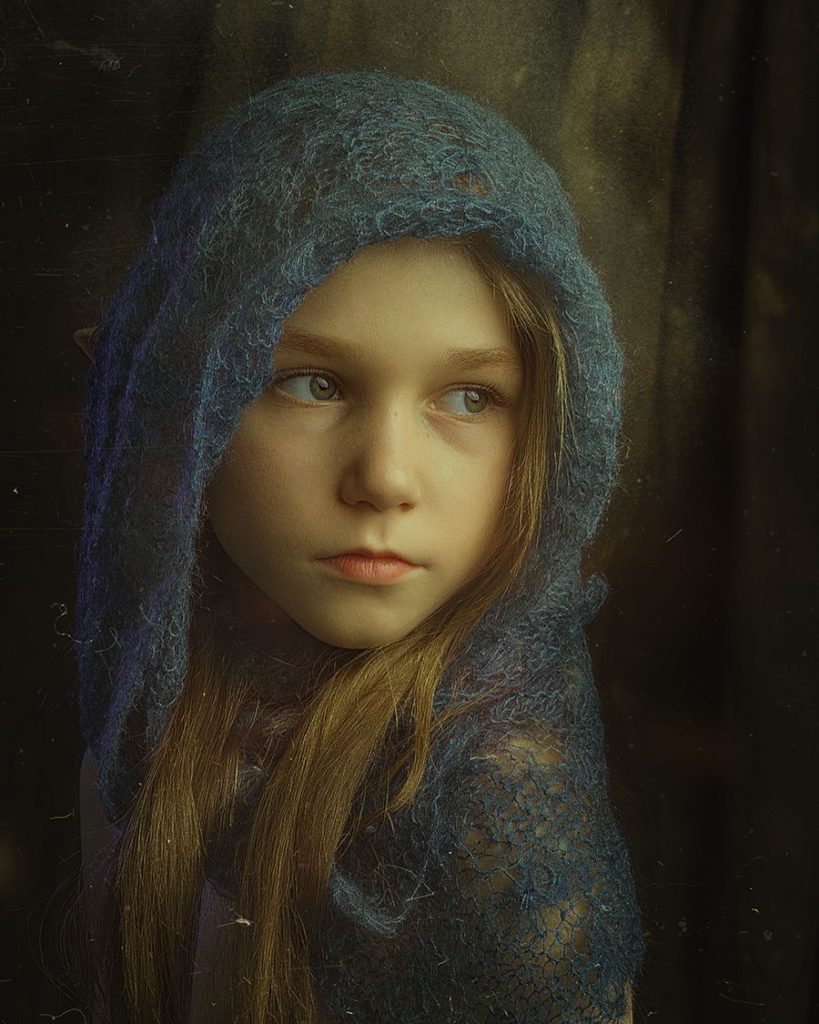
Aperture: F/13, shutter speed: 1/125s, focal length: 85mm, ISO: 50
Blue clothing makes the picture show a tendency of cool colors. The blue color film light on the back of the character further strengthens this tendency.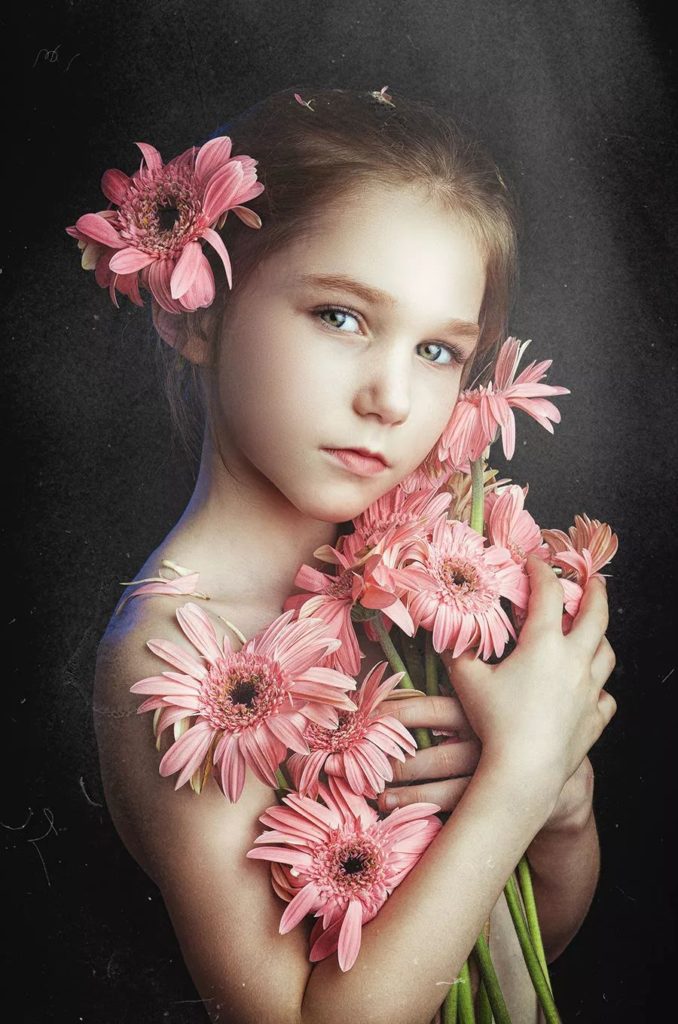
Aperture: F/13, Shutter Speed: 1/125s, Focal Length: 85mm, ISO: 50
Pink is a warm color with a sense of intimacy. The blue contour light weakens the feminine temperament of pink to a certain extent, giving the picture a sense of tranquility.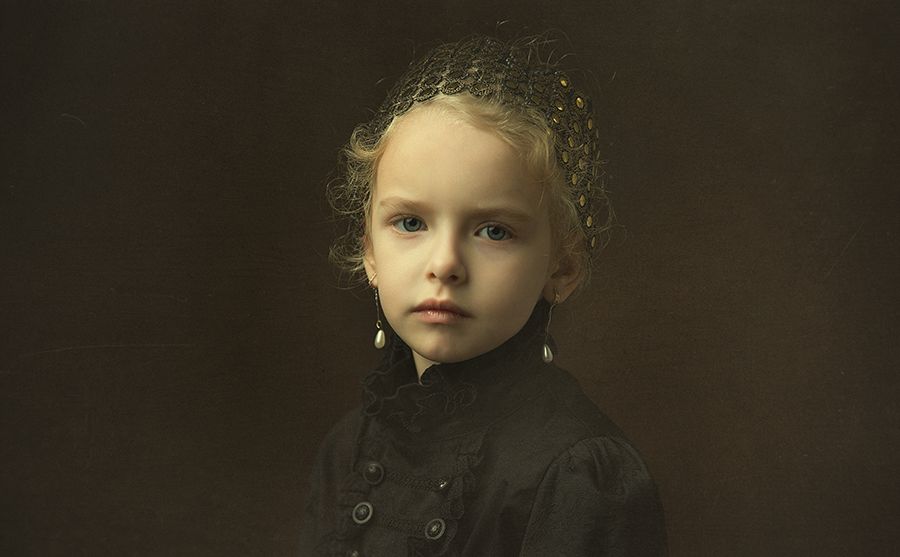
Aperture: F/4, Shutter Speed: 1/200s, Focal Length: 70mm, ISO: 100
The golden headwear and pearl earrings symbolize the nobility of the character’s identity. The character looks straight into the camera, attracting the viewer’s attention, and looks thoughtful.
Emotional Cues of Environmental Atmosphere
Environmental atmosphere is a concentrated expression of a specific emotion. The atmosphere of the environment is a state of mind, a state.
In the treatment of tones and tones, we generally adopt the law of corresponding isomorphism. Under normal circumstances, to express mysterious, melancholic, and sad themes, it is advisable to use low-key, heavy-color or dark-key images. When you want to express lively and cheerful themes, you should choose a high-key, light-colored picture.
In order to express the author’s creative intentions more fully and accurately, a unified tone must be determined in the picture. That is to unify the inner basic mood with the outer tone and tone, so that all elements are unified in this tone. Sometimes, it is borne by a large area of tone. Sometimes, it is governed by a specific hue. This large-area tone or specific tone becomes the “base tone” of the picture at this time.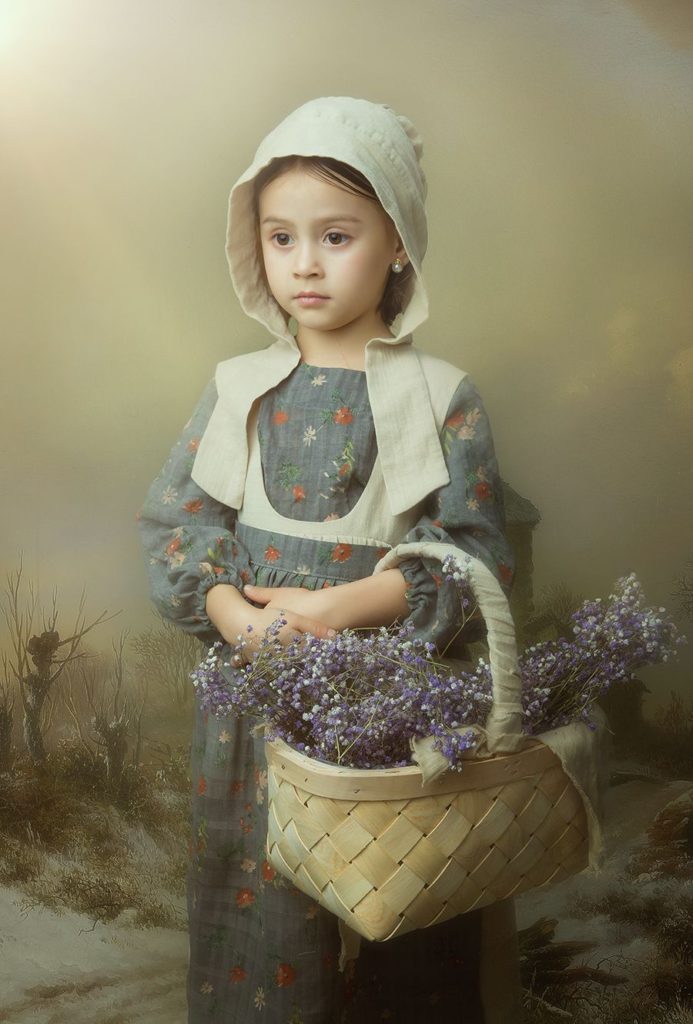
Aperture: F/20, Shutter speed: 1/125s, Focal length: 42mm, ISO: 50
The background material is an oil painting style farm scene. The character is the shape of a European farm girl. The colors and textures of costumes and props show a uniform and simple style. Light brown and gray blue are the main colors of the picture, forming a harmonious tone with the girl’s peaceful demeanor.
Environmental Hints of “synthetic Background”
Composite photos are not a product of the digital age. As early as the 19th century, Swedish photographer Leiland began to experiment with photo collage technology and multi-negative stacking technology, and exhibited the first composite photo in 1855. Therefore, he was called “the father of artistic photography” by later generations.
Although the work of “synthesis” is completed in the later stages of photography, the complete picture has been presented in the photographer’s mind in the early creative conception. Background, as an important factor in explaining the environment and atmosphere, is the element that needs to be established first in the conception. Based on this, the photographer then conceived the design and arrangement of the character and the scene, in order to reach a consensus with the environment explained by the background. Especially when it comes to lighting considerations, photographers need to carefully observe the light effect presented by the background image, and then simulate this light effect in the studio. Only in this way can the characters and the background be fully integrated.
Benefits of “Synthetic Technology”
The advantage of using the “synthesis” technology is that the photographer is no longer stuck in the shooting environment and scene, and can even set the scene as desired, and then derive the character shape and lighting arrangement according to the scene.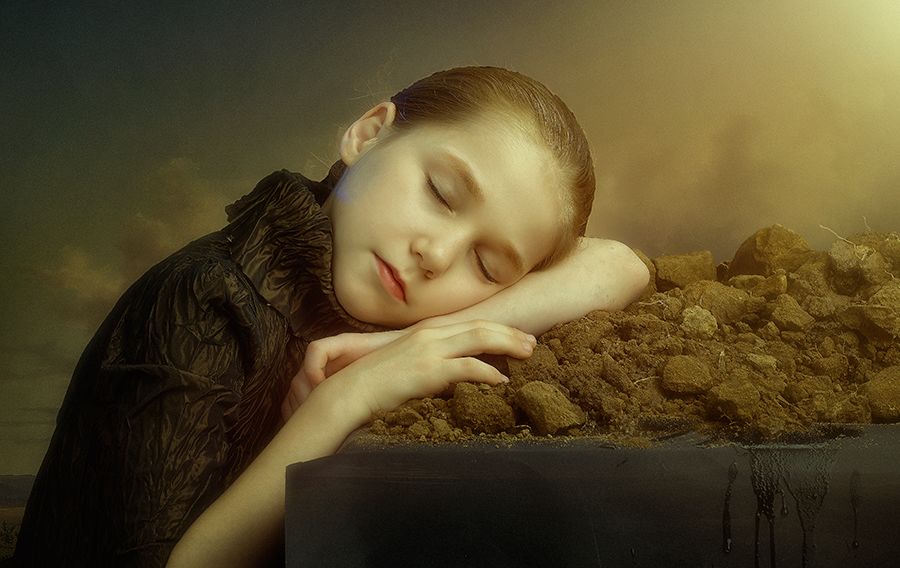
Aperture: F/11, Shutter speed: 1/125s, Focal length: 85mm, ISO: 50
The rough graininess of the soil contrasts sharply with the delicate and smooth skin of the characters. The lines and textures of the clothes also show a corresponding texture.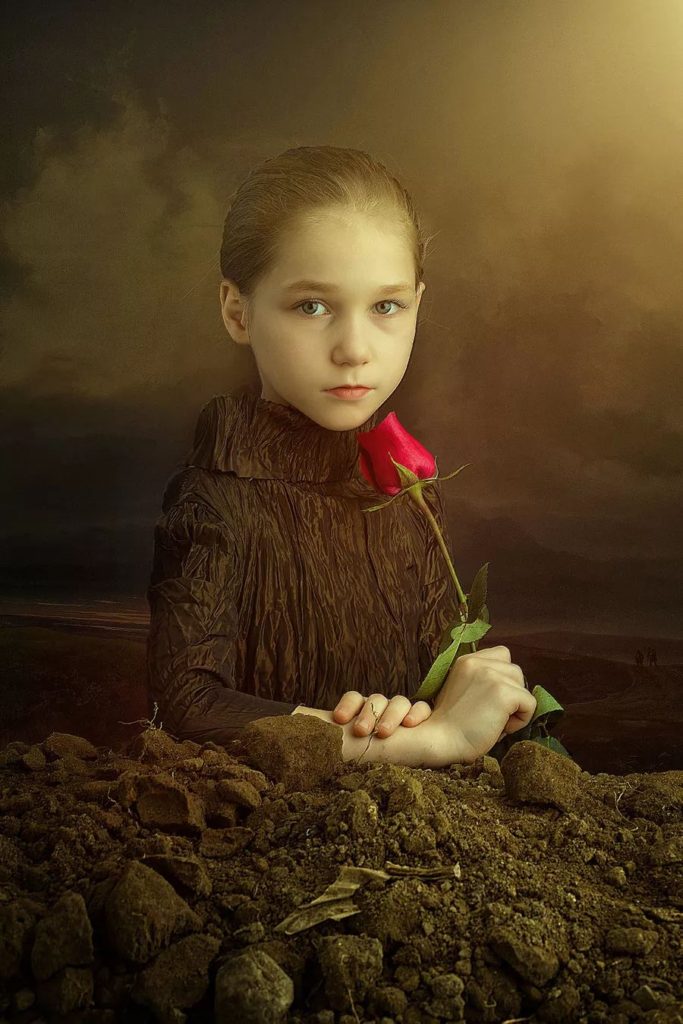
Aperture: F/13, shutter speed: 1/125s, focal length: 85mm, ISO: 50
The background is the late dissolution map. Add a little warm color to form a unified hue with the color of the earth and the costumes of the characters. At the same time, the sense of space of the whole picture has also been rendered.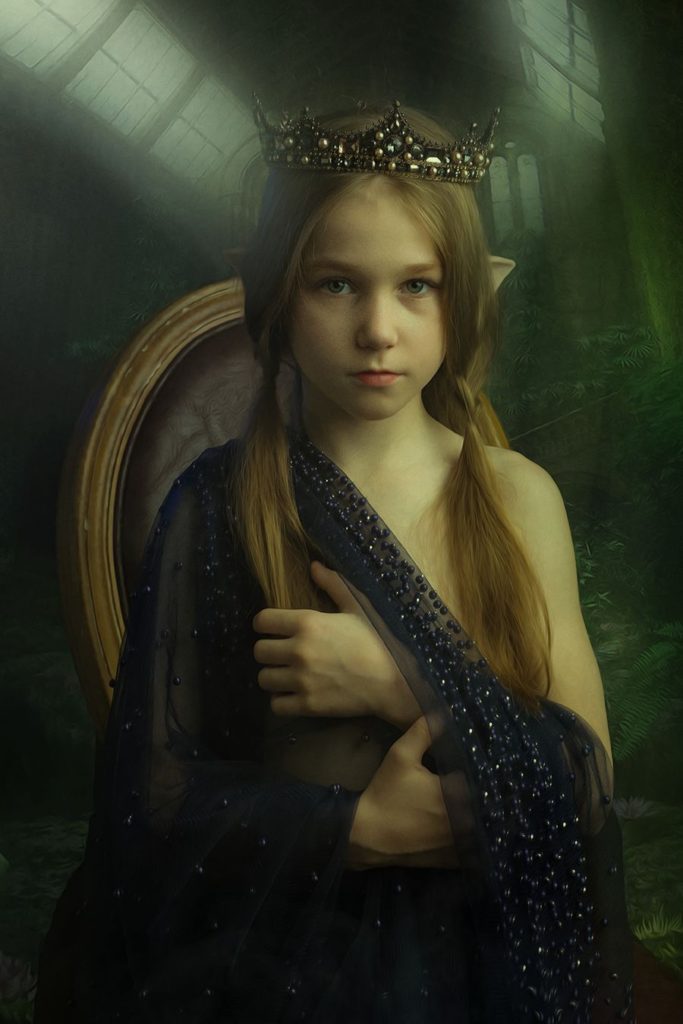
Aperture: F/11, Shutter speed: 1/125s, Focal length: 85mm, ISO: 50
The styling is inspired by the elves series of movies. I want to express the beauty of retro, magic, and imposing manner. The background is a dissolving picture in the later stage, which wants to show the mystery and sense of space in the palace of the elves.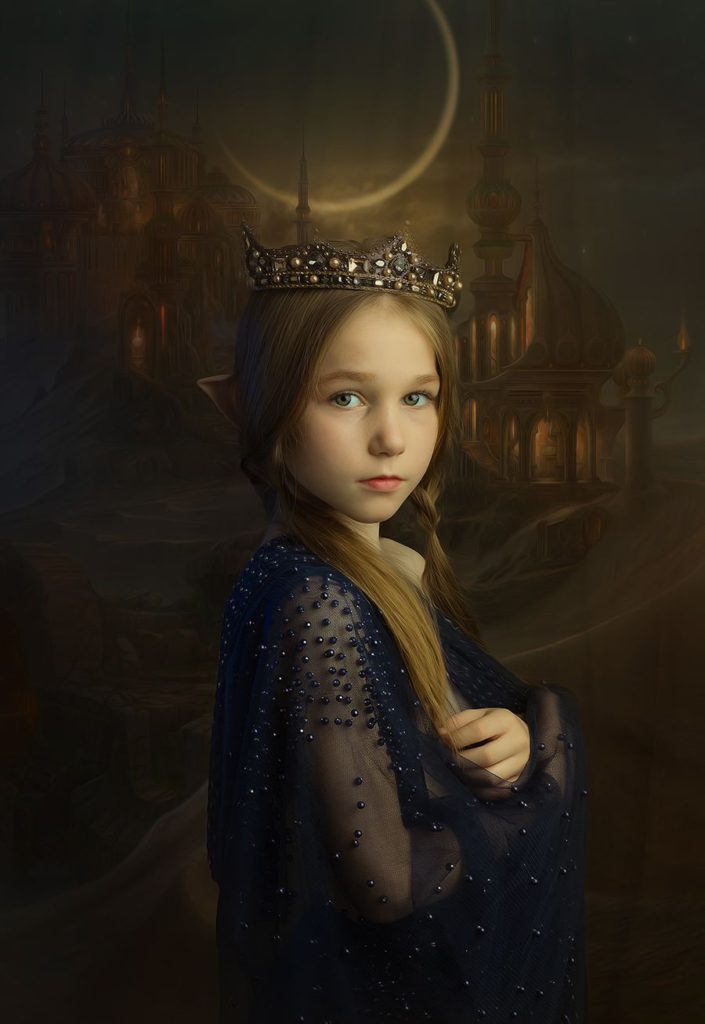
Aperture: F/13 Shutter speed: 1/125s Focal length: 85mm ISO: 50
The background is the late dissolution map. At night, with the distant royal city as the background, a crescent moon adds a sense of mystery to the picture.
Hint of Tone
The hints of the tone to the emotion and meaning conveyed by the picture are very obvious. High-key pictures often give people a bright and cheerful feeling, while low-key pictures make people feel heavy.
Low-key picture lighting
1. Front side light + side backlight
The main light is a soft box, which is placed about 90° to the left of the character. Provide positive metering lighting to ensure that there is a certain light-dark transition on the face of the character, and create a three-dimensional feeling. Arrange a soft box as an auxiliary light on the right back side of the character. The photographer added a cool color film to the wick to provide cool contour light, adding a sense of calmness and stability to the picture.
The front side lighting will form a stronger contrast between light and dark, and the contours of the light-receiving surface of the characters will be more three-dimensional. Photographers often use single-lamp front side lighting to create a low-key atmosphere.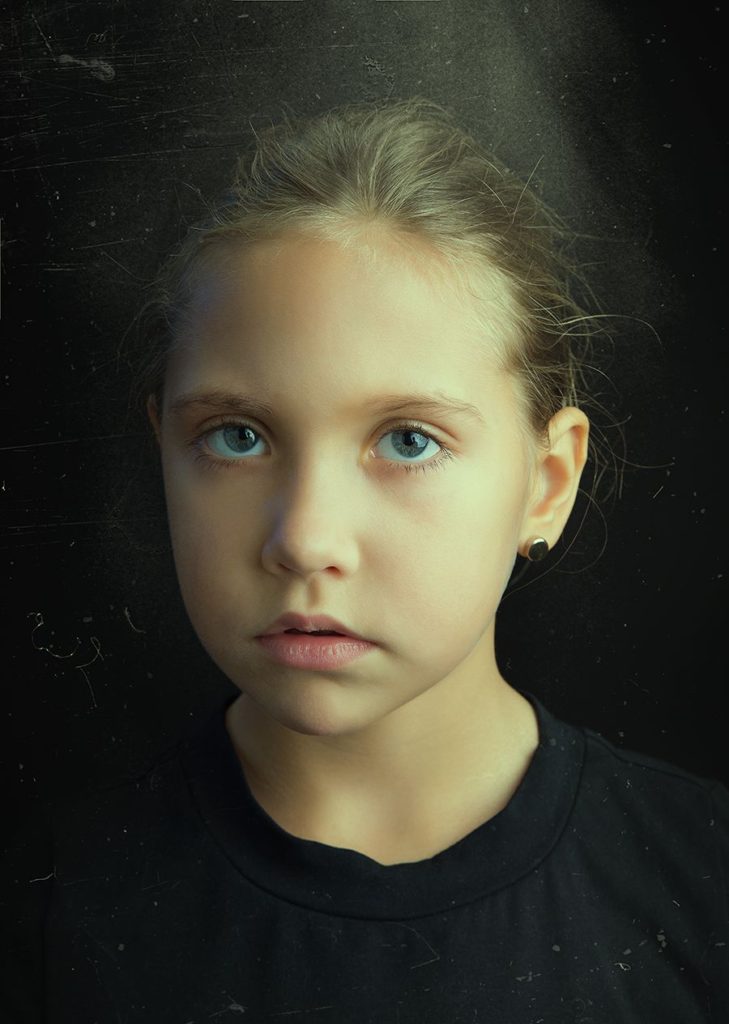
Aperture: F/11, Shutter Speed: 1/200s, Focal Length: 70mm, ISO: 50
The front side lighting forms two areas with the bridge of the character’s nose as the dividing line, with a large contrast between light and dark.
2. Front side light + top light
The main light is an octagonal soft box, which is placed about 45° to the left of the character. Arrange a soft box directly above the character to provide top light and form a headlight. It also helps to separate the characters from the black background, enhancing the sense of space and the three-dimensional sense of the characters.
Compared with the lighting method where the auxiliary light is arranged opposite the main light, the lighting of the front metering plus the top light can form a richer tone transition.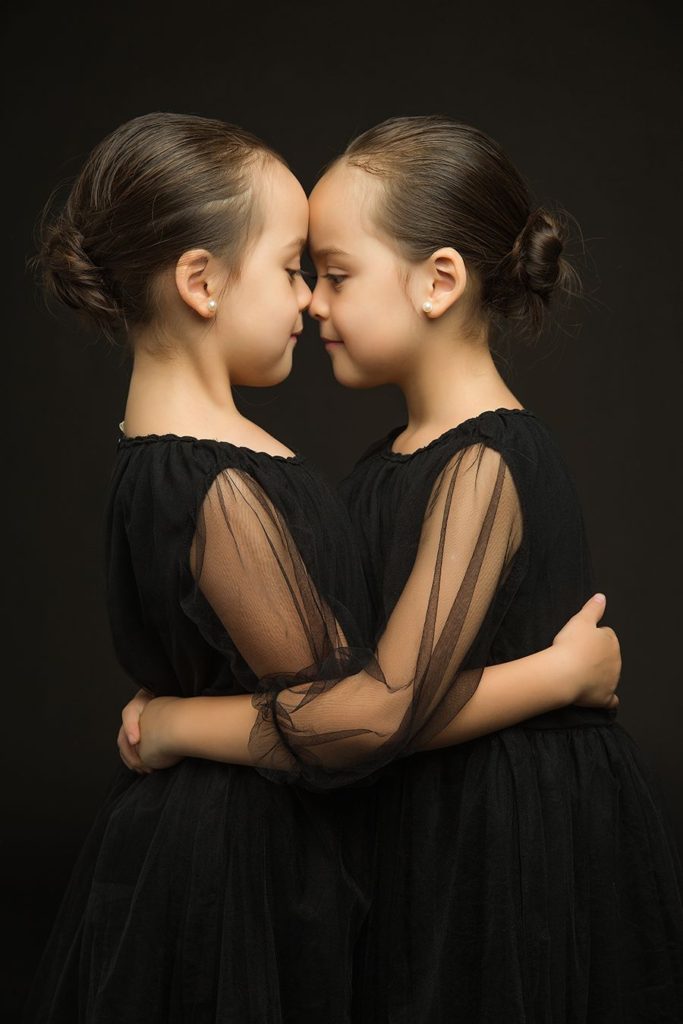
Aperture: F/6.3 Shutter speed: 1/125s Focal length: 57mm ISO: 50
3. Front side light + side backlight
The main light is an octagonal soft box. It is placed about 45° to the left of the character. Arrange a soft box as an auxiliary light on the back side of the character (diagonal to the main light) to provide contour light and create a sense of space in the picture and a three-dimensional sense of the character. And to provide details for the decoration of the back of the character.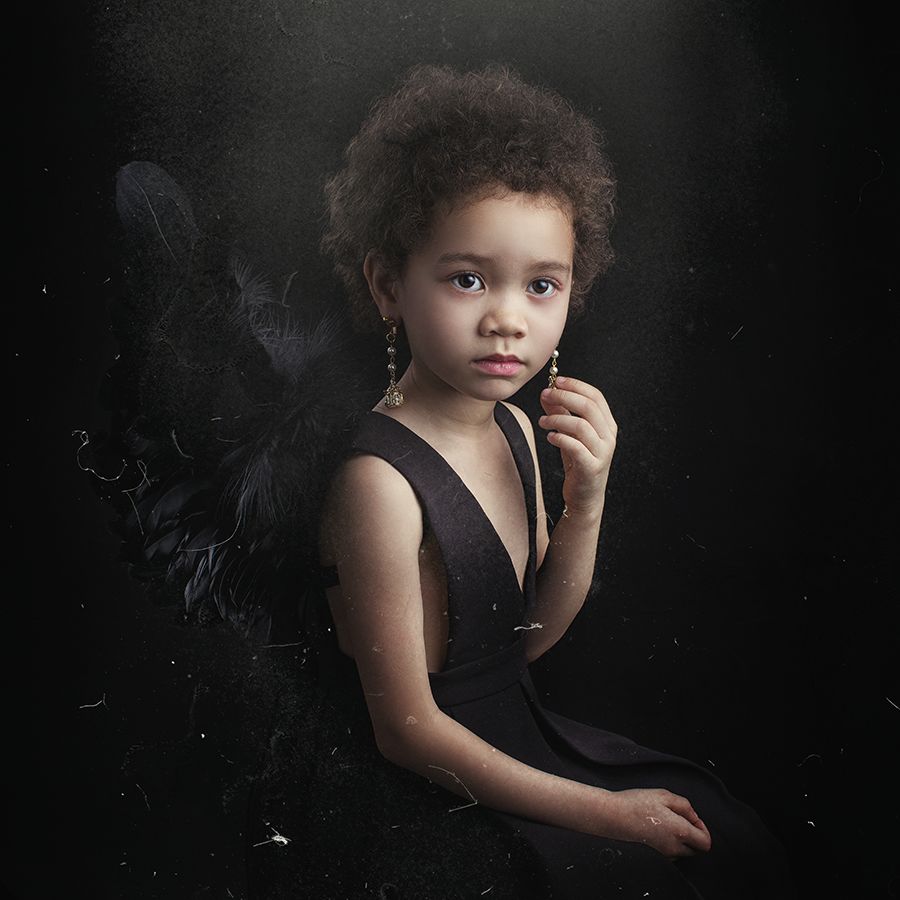
Aperture: F/7.1, Shutter speed: 1/125s, Focal length: 50mm, ISO: 50
The character faces the main lamp side, and the light-receiving surface is larger, so it gets more light. The auxiliary lights provide contour light and also highlight the details of the wings behind.
High-key picture lighting
- Front side light + reflector
The main light is a soft box. The photographer has arranged it at a position about 90° to the left of the character to provide positive metering lighting. Arrange a folded foam reflector on the right side of the character to reduce the contrast between light and dark.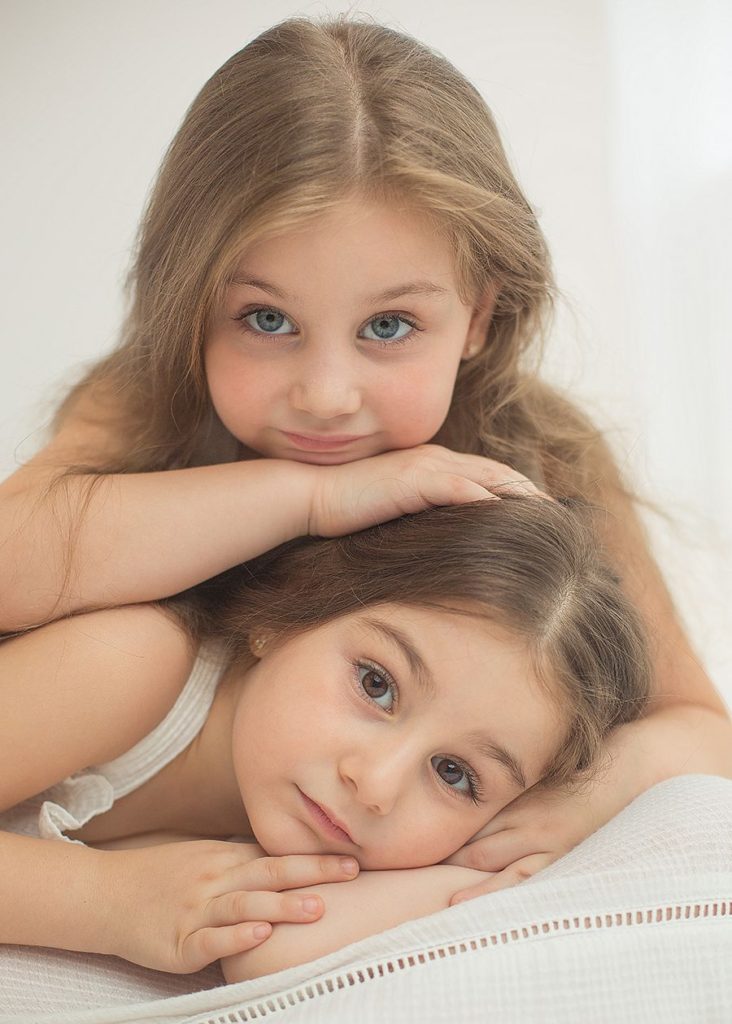
Aperture: F/2.5, Shutter Speed: 1/125s, Focal Length: 50mm, ISO: 100
The light background and shooting environment can create a high-key picture atmosphere.
- Front side light + reflector
The main light is a soft box. The photographer has arranged it at a position about 45° to the left of the character, providing front metering lighting and providing eye catching light. Arrange a folded foam reflector on the right side of the character to fill in the light, reduce the contrast between light and dark, and make the transition between light and dark even.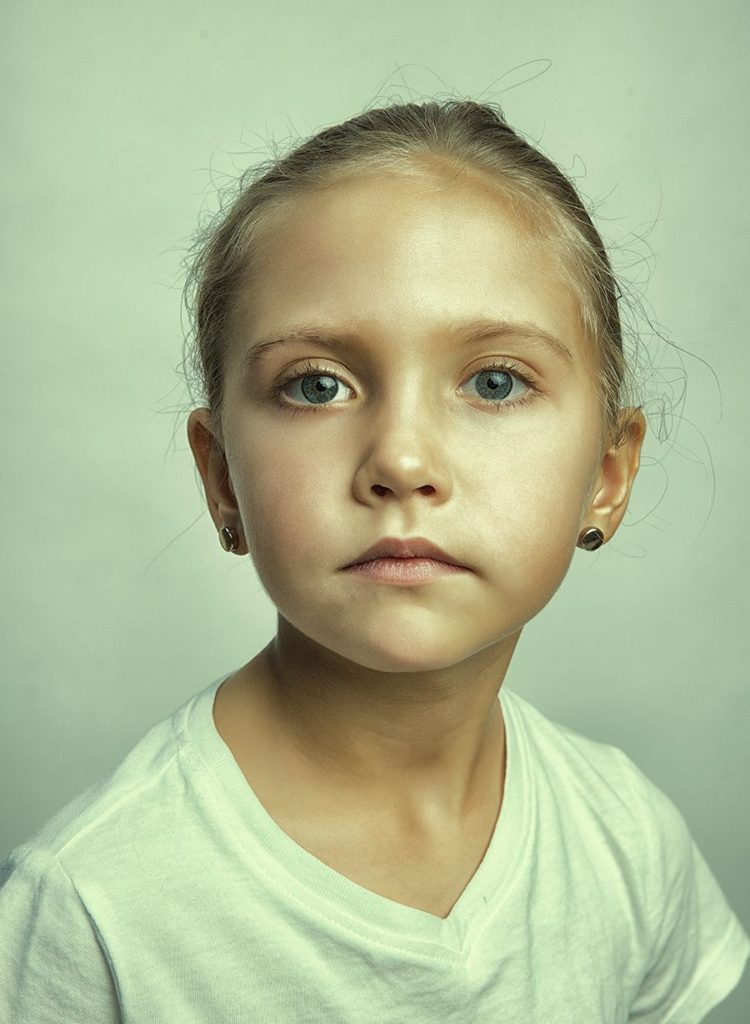
Aperture: F/10, Shutter Speed: 1/125s, Focal Length: 65mm, ISO: 50
- Front side light + contour light
On the premise of front metering and reflector, photographer has arranged a soft box behind the character higher than the top of the head (diagonal direction of the main light) to provide light and emphasize the details and texture of the hair.
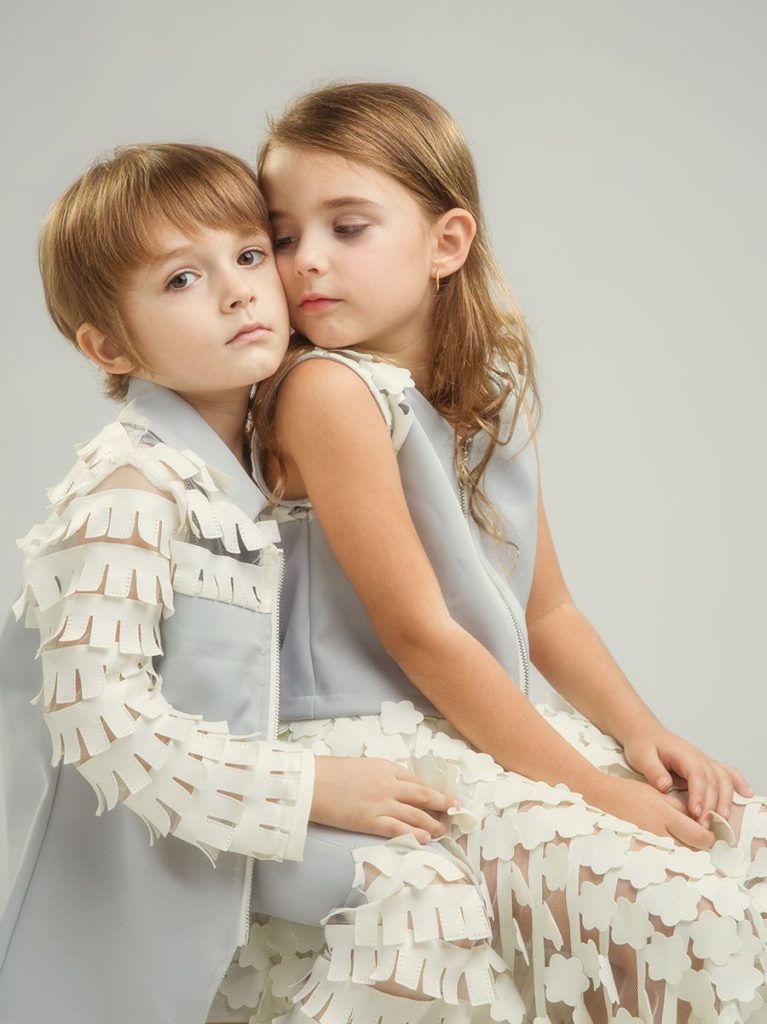
Aperture: F/8, Shutter Speed: 1/125s, Focal Length: 70mm, ISO: 50
The light distribution method of softbox and reflector is to arrange an auxiliary lamp on the back of the character to provide headlight. The tone retains the rosy authenticity of the skin tone.
